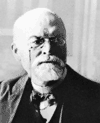
Born 18 May 1941. quotes
Scottish astronomer, noted for his scholarship and teaching, who in 1980 was appointed by Royal Warrant Astronomer Royal for Scotland, a post he held until 31 Dec 1990. The title of Astronomer Royal for Scotland was created in 1834. As Jacksonian Professor of Natural Philosophy and head of Cavendish Laboratory at the University of Cambridge, UK, his research interests include the emission from dust in the distant universe, observational cosmology, galaxy formation, and gravitational lensing. He is the current Public Understanding of Physics Fellow of the Institute of Physics
Scottish astronomer, noted for his scholarship and teaching, who in 1980 was appointed by Royal Warrant Astronomer Royal for Scotland, a post he held until 31 Dec 1990. The title of Astronomer Royal for Scotland was created in 1834. As Jacksonian Professor of Natural Philosophy and head of Cavendish Laboratory at the University of Cambridge, UK, his research interests include the emission from dust in the distant universe, observational cosmology, galaxy formation, and gravitational lensing. He is the current Public Understanding of Physics Fellow of the Institute of Physics
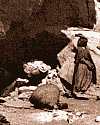
Born 18 May 1915; died 14 Nov 1996 at age 81.
American anthropological theorist and formulator of the nomenclature now in standard use to categorize primitive societies as bands, tribes, chiefdoms, and states. Although widely accepted, the system was abandoned by Service himself because his subsequent research made him question the accuracy of the terminology. Service did fieldwork among the Havasupai of the Grand Canyon and in Paraguay and Mexico. His principal theoretical interests were in kinship, cultural evolution, theories of culture and the evolution of political institutions. His principal ethnographic contribution was Tobati: Paraguayan Town (1954), written with his wife Helen.[Image: Havasupai Cliff Dwelling]
American anthropological theorist and formulator of the nomenclature now in standard use to categorize primitive societies as bands, tribes, chiefdoms, and states. Although widely accepted, the system was abandoned by Service himself because his subsequent research made him question the accuracy of the terminology. Service did fieldwork among the Havasupai of the Grand Canyon and in Paraguay and Mexico. His principal theoretical interests were in kinship, cultural evolution, theories of culture and the evolution of political institutions. His principal ethnographic contribution was Tobati: Paraguayan Town (1954), written with his wife Helen.[Image: Havasupai Cliff Dwelling]
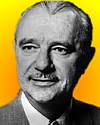
Born 18 May 1901; died 11 Dec 1978 at age 77. quotes
American biochemist who was awarded the Nobel Prize for Chemistry in 1955 for his work on biochemically important sulphur compounds, especially for the first synthesis of a polypeptide hormone. Underneath the brain, the pituitary gland is well-protected and, in man about as big as a bean. It secretes several hormones, that is, substances which regulate important physiological functions. These are built up from amino acids in the same way as proteins, but with a far lower molecular weight. Vigneaud isolated and synthesized two pituitary hormones: vasopressin, which acts on the muscles of the blood vessels to cause elevation of blood pressure; and oxytocin, the principal agent causing contraction of the uterus and secretion of milk.
American biochemist who was awarded the Nobel Prize for Chemistry in 1955 for his work on biochemically important sulphur compounds, especially for the first synthesis of a polypeptide hormone. Underneath the brain, the pituitary gland is well-protected and, in man about as big as a bean. It secretes several hormones, that is, substances which regulate important physiological functions. These are built up from amino acids in the same way as proteins, but with a far lower molecular weight. Vigneaud isolated and synthesized two pituitary hormones: vasopressin, which acts on the muscles of the blood vessels to cause elevation of blood pressure; and oxytocin, the principal agent causing contraction of the uterus and secretion of milk.
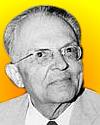
Born 18 May 1891; died 14 Sep 1970 at age 79. quotes
German-American philosopher who made significant contributions to logic and the philosophy of science. To avoid the ambiguities resulting from the use of ordinary language, he made a logical analysis of language. He believed in studying philosphical issues in artificial languages constructed under the rules of logic and mathematics. His applications of such languages included the different interpretation of probability, the nature of explanation and the distinctions between analytic and synthetic, a priori and a posteriori, and necessary and contingent statements. His influential books include The Logical Structure of the World (1928) and The Logical Syntax of Language (1934).«
German-American philosopher who made significant contributions to logic and the philosophy of science. To avoid the ambiguities resulting from the use of ordinary language, he made a logical analysis of language. He believed in studying philosphical issues in artificial languages constructed under the rules of logic and mathematics. His applications of such languages included the different interpretation of probability, the nature of explanation and the distinctions between analytic and synthetic, a priori and a posteriori, and necessary and contingent statements. His influential books include The Logical Structure of the World (1928) and The Logical Syntax of Language (1934).«
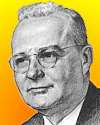
Born 18 May 1889; died 2 Nov 1944 at age 55. quotes
American engineer and chemist who discovered the effectiveness of tetraethyl lead (C2H5)4Pb in 1921 as an antiknock additive for gasoline. Knocking jars the wall of the automobile cylinders by the explosion instead of steadily pushing the cylinder back. This wastes a large percentage of the energy and damages the engine. He also developed carbon tetrafluoride (CF4) a cleaning agent and in 1930 dichlorofluoromethane (CCl2F2) later called "Freon". This is a non-toxic and non-flammable gas, unreactive at normal temperatures but able to be easily liquified by pressure alone. It replaced toxic gases previously used in home refrigeration. more
American engineer and chemist who discovered the effectiveness of tetraethyl lead (C2H5)4Pb in 1921 as an antiknock additive for gasoline. Knocking jars the wall of the automobile cylinders by the explosion instead of steadily pushing the cylinder back. This wastes a large percentage of the energy and damages the engine. He also developed carbon tetrafluoride (CF4) a cleaning agent and in 1930 dichlorofluoromethane (CCl2F2) later called "Freon". This is a non-toxic and non-flammable gas, unreactive at normal temperatures but able to be easily liquified by pressure alone. It replaced toxic gases previously used in home refrigeration. more
From the Periodic Table to Production: The Life of Thomas Midgley, Jr., by Thomas Midgley. - book suggestion.
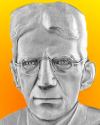
Born 18 May 1875; died 22 Apr 1945 at age 69.
Robert Elmer Horton was an American hydraulic engineer who is regarded as the father of modern hydrology, and who developed and refined techniques for systematic separation of rainfall drainage into the components such as infiltration, evaporation, interception, transpiration and overland flow. He recognized that physical characteristics were important for determining runoff and flood discharge, such as drainage density, channel slope, and overland flow length. His studies established a basis for the analysis of soil erosion enabling strategies for soil conservation. One month before he died, he published a 95-page landmark paper that summarized two decades of study giving what are now known as Horton's Laws: the law of stream numbers, the law of stream lengths, limiting infiltration capacity, and the runoff-detention-storage relation.«[Image: from Robert E. Horton Medal awarded by the American Geophysical Union to recognize outstanding contributions to the geophysical aspects of hydrology.]
Robert Elmer Horton was an American hydraulic engineer who is regarded as the father of modern hydrology, and who developed and refined techniques for systematic separation of rainfall drainage into the components such as infiltration, evaporation, interception, transpiration and overland flow. He recognized that physical characteristics were important for determining runoff and flood discharge, such as drainage density, channel slope, and overland flow length. His studies established a basis for the analysis of soil erosion enabling strategies for soil conservation. One month before he died, he published a 95-page landmark paper that summarized two decades of study giving what are now known as Horton's Laws: the law of stream numbers, the law of stream lengths, limiting infiltration capacity, and the runoff-detention-storage relation.«[Image: from Robert E. Horton Medal awarded by the American Geophysical Union to recognize outstanding contributions to the geophysical aspects of hydrology.]
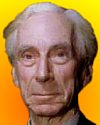
Born 18 May 1872; died 2 Feb 1970 at age 97. quotes
(3rd earl) Bertrand Arthur William Russell was a Welsh mathematical logician, analytical philosopher and writer. He worked to establish foundations of mathematics and developed contemporary formal logic. He is known for Russell's paradox (concerning the set of all sets that are not members of themselves), his theory of types, and his contributions to the first-order predicate calculus. He believed in logicism, the theory that mathematics was in some important sense reducible to formal logic. With Alfred Whitehead, he co-authored Prinicpia Mathematica (1910). Russell is regarded as one of the most important logicians of the twentieth century. He was active in social and political campaigns, and advocated pacifism and nuclear disarmament. The Nobel Prize for Literature was awarded to Russell in 1950.«
(3rd earl) Bertrand Arthur William Russell was a Welsh mathematical logician, analytical philosopher and writer. He worked to establish foundations of mathematics and developed contemporary formal logic. He is known for Russell's paradox (concerning the set of all sets that are not members of themselves), his theory of types, and his contributions to the first-order predicate calculus. He believed in logicism, the theory that mathematics was in some important sense reducible to formal logic. With Alfred Whitehead, he co-authored Prinicpia Mathematica (1910). Russell is regarded as one of the most important logicians of the twentieth century. He was active in social and political campaigns, and advocated pacifism and nuclear disarmament. The Nobel Prize for Literature was awarded to Russell in 1950.«
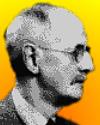
Born 18 May 1859; died 18 Jun 1944 at age 85.
who introduced the term elastic rebound in a report (1910) on the 1906 San Francisco earthquake. His early career was as a glaciologist, but then the study of earthquakes became his most significant work. Reid was the first to establish that it is the fault that causes an earthquake, rather than a fault results from an earthquake. His elastic rebound theory, said that an earthquake occurs upon the sudden release of a large amount of stored energy after a long gradual accumulation of stress along a fault line. Later, modern science explained that Earth's surface consists of huge tectonic plates slowly moving relative to each other, and stress (elastic strain energy) gradually builds along their edges moving against each other.«
who introduced the term elastic rebound in a report (1910) on the 1906 San Francisco earthquake. His early career was as a glaciologist, but then the study of earthquakes became his most significant work. Reid was the first to establish that it is the fault that causes an earthquake, rather than a fault results from an earthquake. His elastic rebound theory, said that an earthquake occurs upon the sudden release of a large amount of stored energy after a long gradual accumulation of stress along a fault line. Later, modern science explained that Earth's surface consists of huge tectonic plates slowly moving relative to each other, and stress (elastic strain energy) gradually builds along their edges moving against each other.«
After the Earth Quakes: Elastic Rebound on an Urban Planet, by Hough and Bilham. - book suggestion.
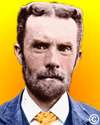
Born 18 May 1850; died 3 Feb 1925 at age 74. quotes
English physicist and electrical engineer who predicted the existence of the ionosphere. In 1870, he became a telegrapher, but increasing deafness forced him to retire in 1874. He then devoted himself to investigations of electricity. In 1902, Heaviside and Arthur Kennelly predicted an ionised layer in the upper atmosphere that would reflect radio waves—useful for long distance communication. Radio signals can travel to distant parts of the earth by bouncing off the underside of this layer, as short-wave radio hams well know. The existence of the Heaviside layer (ionosphere) was demonstrated in the 1920s, when radio pulses were transmitted vertically upward and the pulses returning from the reflecting layer were received.«
English physicist and electrical engineer who predicted the existence of the ionosphere. In 1870, he became a telegrapher, but increasing deafness forced him to retire in 1874. He then devoted himself to investigations of electricity. In 1902, Heaviside and Arthur Kennelly predicted an ionised layer in the upper atmosphere that would reflect radio waves—useful for long distance communication. Radio signals can travel to distant parts of the earth by bouncing off the underside of this layer, as short-wave radio hams well know. The existence of the Heaviside layer (ionosphere) was demonstrated in the 1920s, when radio pulses were transmitted vertically upward and the pulses returning from the reflecting layer were received.«
Oliver Heaviside: The Life, Work, and Times of an Electrical Genius of the Victorian Age, by Paul J Nahin. - book suggestion.
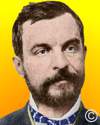
Born 18 May 1824; died 12 Jan 1877 at age 52. quotes
Wilhelm Friedrich Benedikt Hofmeister was a German botanist who began as a music-seller, completely self-taught in botany, yet a pioneer in comparative plant morphology, though eclipsed by his contemporaries. Perhaps he was too far ahead in his time: out of step with the majority. He studied the most extensive array of plants then assembled, gleaning their basic common features to form a unifying perspective with a genius that has been compared to Darwin and Mendel. Despite very severe short-sightness, he described specimens with remarkably extensive detail using the microscope. Hofmeister did ground-breaking work in plant embryology, plant life histories, and principles of plant growth and development. He revealed the “alternation of generations” (1862), the life cycle pattern between sporophyte and gametophyte in the lower plants.« more
Wilhelm Friedrich Benedikt Hofmeister was a German botanist who began as a music-seller, completely self-taught in botany, yet a pioneer in comparative plant morphology, though eclipsed by his contemporaries. Perhaps he was too far ahead in his time: out of step with the majority. He studied the most extensive array of plants then assembled, gleaning their basic common features to form a unifying perspective with a genius that has been compared to Darwin and Mendel. Despite very severe short-sightness, he described specimens with remarkably extensive detail using the microscope. Hofmeister did ground-breaking work in plant embryology, plant life histories, and principles of plant growth and development. He revealed the “alternation of generations” (1862), the life cycle pattern between sporophyte and gametophyte in the lower plants.« more
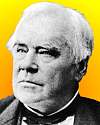
c.1887
Born 18 May 1815; died 18 Sep 1892 at age 77.
British-American engineer who originated scientific methods to test hydraulic machinery and invented the Francis mixed-flow reaction turbine (combining radial- and axial-flow) for low-pressure installations. He emigrated to the U.S. at age 18, and joined the Locks and Canal Co., Lowell, Mass. In 1837, he became its Chief Engineer until retirement. The company owned and operated Lowell's canal system providing waterpower for the textile industry there. Francis designed a more efficient successor to the Boyden turbine, with Uriah A. Boyden of Boston. Being half the size but equal in power, two fit in each wheel pit and doubled power generation.The turbine acted as a hydraulic motor to drive many mill machines through belts and line shafts. He was a founding member of the American Society of Civil Engineers and its president in 1880.« more
British-American engineer who originated scientific methods to test hydraulic machinery and invented the Francis mixed-flow reaction turbine (combining radial- and axial-flow) for low-pressure installations. He emigrated to the U.S. at age 18, and joined the Locks and Canal Co., Lowell, Mass. In 1837, he became its Chief Engineer until retirement. The company owned and operated Lowell's canal system providing waterpower for the textile industry there. Francis designed a more efficient successor to the Boyden turbine, with Uriah A. Boyden of Boston. Being half the size but equal in power, two fit in each wheel pit and doubled power generation.The turbine acted as a hydraulic motor to drive many mill machines through belts and line shafts. He was a founding member of the American Society of Civil Engineers and its president in 1880.« more
Born 18 May 1804; died 5 Sep 1866 at age 62.
French engineer and economist who was one of the first to analyze the cost-effectiveness of public works.
French engineer and economist who was one of the first to analyze the cost-effectiveness of public works.
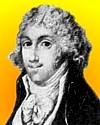
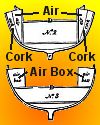
English coach-builder, inventor and pioneer who patented the “unimmergible” (unsinkable) construction of the modern lifeboat (2 Nov 1785, GB No. 1498/1785*). His design used airtight compartments, cork, and other lightweight materials to build small boats that would not sink even when filled with water. Despite the patronage of the Price of Wales, he was unable to attract support for his invention from the Admiralty. Lukin fitted a coble for the the Rev. Dr. Shairp, of Bamborough, who was in charge of a charity for saving life and property at sea, which was reported to have saved several lives within its first year of use. Lukin’s other inventions included a raft for rescuing persons under ice, an adjustable reclining hospital bed, and a rain gauge.«[Image right: Life-boat cross-section drawings from a book published by Lukin in 1790, showing buoyancy compartments.] more
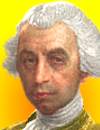
Born 18 May 1711; died 13 Feb 1787 at age 75. quotes
Serbo-Croatian astronomer and mathematician who gave the first geometric procedure for determining the equator of a rotating planet from three observations of a surface feature and for computing the orbit of a planet from three observations of its position. Boscovich was one of the first in continental Europe to accept Newton's gravitational theories and he wrote 70 papers on optics, astronomy, gravitation, meteorology and trigonometry. Boscovich also showed much ability in dealing with practical problems. He suggested and directed the draining of the Pontine marshes near Rome, and recommended the use of iron bands to control the spread of cracks in the dome of St. Peter's basilica.Name in native language is Ruđer Josip Bošković.
Serbo-Croatian astronomer and mathematician who gave the first geometric procedure for determining the equator of a rotating planet from three observations of a surface feature and for computing the orbit of a planet from three observations of its position. Boscovich was one of the first in continental Europe to accept Newton's gravitational theories and he wrote 70 papers on optics, astronomy, gravitation, meteorology and trigonometry. Boscovich also showed much ability in dealing with practical problems. He suggested and directed the draining of the Pontine marshes near Rome, and recommended the use of iron bands to control the spread of cracks in the dome of St. Peter's basilica.Name in native language is Ruđer Josip Bošković.

Died 18 May 2007 at age 74 (born 24 Oct 1932).
French physicist who was awarded the 1991 Nobel Prize for Physics for "discovering that methods developed for studying order phenomena in simple systems can be generalized to more complex forms of matter, in particular to liquid crystals and polymers." He described mathematically how, for example, magnetic dipoles, long molecules or molecule chains can under certain conditions form ordered states, and what happens when they pass from an ordered to a disordered state. Such changes of order occur when, for example, a heated magnet changes from a state in which all the small atomic magnets are lined up in parallel to a disordered state in which the magnets are randomly oriented. Recently, he has been concerned with the physical chemistry of adhesion.
French physicist who was awarded the 1991 Nobel Prize for Physics for "discovering that methods developed for studying order phenomena in simple systems can be generalized to more complex forms of matter, in particular to liquid crystals and polymers." He described mathematically how, for example, magnetic dipoles, long molecules or molecule chains can under certain conditions form ordered states, and what happens when they pass from an ordered to a disordered state. Such changes of order occur when, for example, a heated magnet changes from a state in which all the small atomic magnets are lined up in parallel to a disordered state in which the magnets are randomly oriented. Recently, he has been concerned with the physical chemistry of adhesion.
Died 18 May 1995 at age 80 (born 21 Nov 1914).
French neurologist and discoverer of some of the earliest known tranquilizing drugs, including chlorpromazine.
French neurologist and discoverer of some of the earliest known tranquilizing drugs, including chlorpromazine.
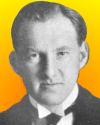
Died 18 May 1975 at age 87 (born 27 May 1887). quotes
Polish-American physical chemist who discovered the radioactive displacement law simultaneously with Frederick Soddy of Great Britain. According to this law, when a radioactive atom decays by emitting an alpha particle, the atomic number of the resulting atom is two fewer than that of the parent atom. He discovered several elements that are created through nuclear disintegration. The first discovery of protactinium was in 1913 by Kasimir Fajans and O. Göhring, who found the isotope protactinium-234m (half-life 1.2 min), a decay product of uranium-238; they named it brevium for its short life. (Protactinium-231 was later identified in 1918 by other scientists; the name protoactinium was adopted at this time.)
Polish-American physical chemist who discovered the radioactive displacement law simultaneously with Frederick Soddy of Great Britain. According to this law, when a radioactive atom decays by emitting an alpha particle, the atomic number of the resulting atom is two fewer than that of the parent atom. He discovered several elements that are created through nuclear disintegration. The first discovery of protactinium was in 1913 by Kasimir Fajans and O. Göhring, who found the isotope protactinium-234m (half-life 1.2 min), a decay product of uranium-238; they named it brevium for its short life. (Protactinium-231 was later identified in 1918 by other scientists; the name protoactinium was adopted at this time.)
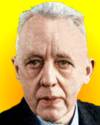
Died 18 May 1965 at age 72 (born 28 Oct 1892). quotes
Dutch science historian, noted in particular for his work on the history of mathematics and mechanics. He published comprehensive studies of Archimedes, and an extensive examination of the Scientific Revolution’s mechanization concept. His seminal work, The Mechanization of the World Picture, delves into the transition from the Aristotelian worldview to the mechanistic perspective of the 17th century. Dijksterhuis emphasized the historical continuity of scientific thought and its development. His writings and insights have greatly contributed to the understanding of the evolution of scientific thought from antiquity to the modern age.«
Dutch science historian, noted in particular for his work on the history of mathematics and mechanics. He published comprehensive studies of Archimedes, and an extensive examination of the Scientific Revolution’s mechanization concept. His seminal work, The Mechanization of the World Picture, delves into the transition from the Aristotelian worldview to the mechanistic perspective of the 17th century. Dijksterhuis emphasized the historical continuity of scientific thought and its development. His writings and insights have greatly contributed to the understanding of the evolution of scientific thought from antiquity to the modern age.«
Archimedes, by Eduard Jan Dijksterhuis. - book suggestion.
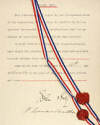
Died 18 May 1940 at age 80 (born 26 Jul 1859).
French engineer who was an early advocate of the building of a canal across the Isthmus of Panama and chief organizer of the project. He was instrumental in getting the waterway routed through Panama instead of Nicaragua. He was a leader in the conspiracy that successfully wrested Panama from Colombia. As minister of the new Panamanian republic, he negotiated the Hay-Bunau-Varilla Treaty (18 Nov 1903) that gave the U.S. perpetual use and control of the waterway in the Canal Zone for $10,000,000 and an annual fee of $250,000.Image: Signature page of Hay-Bunau-Varilla Treaty.
French engineer who was an early advocate of the building of a canal across the Isthmus of Panama and chief organizer of the project. He was instrumental in getting the waterway routed through Panama instead of Nicaragua. He was a leader in the conspiracy that successfully wrested Panama from Colombia. As minister of the new Panamanian republic, he negotiated the Hay-Bunau-Varilla Treaty (18 Nov 1903) that gave the U.S. perpetual use and control of the waterway in the Canal Zone for $10,000,000 and an annual fee of $250,000.Image: Signature page of Hay-Bunau-Varilla Treaty.
Path Between The Seas: The Creation of the Panama Canal, by David McCullough. - book suggestion.
Died 18 May 1922 at age 76 (born 18 Jun 1845). quotes
Charles Louis Alphonse Lavaran was a French physician, pathologist and parasitologist who, as a French military surgeon in Algeria, discovered the parasite that causes human malaria in the red blood cells. He founded the medical field of protozoology, doing important work on other protozoal diseases, including sleeping-sickness and kala-azar. For this he received the 1907 Nobel Prize for medicine. From 1896 he spent the rest of his life as a researcher the Pasteur Institute in Paris. In 1907, Laveran founded the Laboratory of Tropical Diseases at the Pasteur Institute and founded the Société de Pathologie Exotique in 1908.(Photo credit: BBC Hulton Picture Library) more
Charles Louis Alphonse Lavaran was a French physician, pathologist and parasitologist who, as a French military surgeon in Algeria, discovered the parasite that causes human malaria in the red blood cells. He founded the medical field of protozoology, doing important work on other protozoal diseases, including sleeping-sickness and kala-azar. For this he received the 1907 Nobel Prize for medicine. From 1896 he spent the rest of his life as a researcher the Pasteur Institute in Paris. In 1907, Laveran founded the Laboratory of Tropical Diseases at the Pasteur Institute and founded the Société de Pathologie Exotique in 1908.(Photo credit: BBC Hulton Picture Library) more
In 1991, the first Briton into space, Helen Sharman, launched with two cosmonauts in a Soyuz spacecraft.
In 1980, following a weeklong series of earthquakes and smaller explosions of ash and smoke, the long-dormant Mount St. Helens volcano erupted in Washington state, U.S., hurling ash 15,000 feet into the air and setting off mudslides and avalanches. The eruptions caused minimal damage in the sparsely populated area, but about 400 people - mostly loggers and forest rangers - were evacuated. The explosion was characterized as the equivalent of 27,000 atomic bombs. The cloud of ash eventually circled the globe.
Mount St Helens: The Eruption and Recovery of a Volcano, by Rob Carson. - book suggestion.
In 1974, India became the sixth nuclear power with the underground test of a nuclear fission device.
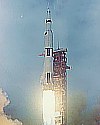
In 1969, the Apollo 10 was launched to be a complete staging of the Apollo 11 mission without actually landing on the Moon. The mission was the second to orbit the Moon and the first to travel to the Moon with the entire Apollo spacecraft configuration. It made a successful eight-day dress rehearsal for the first manned moon landing. Astronauts Thomas Stafford and Eugene Cernan descended inside the Lunar Module to within 14 kilometers of the lunar surface (achieving the closest approach to the Moon before Apollo 11 landed two months later). Apollo 10 splashed down at 12:52 pm on 26 May, less than 4 miles (6.4 km) from the target point and the recovery ship
In 1967, the first legalization of human artificial insemination in the U.S. was enacted by the state of Oklahoma and signed this day by the governor. It came a century after the first trials. The first recorded human impregnation by means of artificial insemination in the U.S. was made in 1866. Dr. James Marion Sims, gynecologist and chief of the Woman's Hospital, New York gave over 54 such injections in 1866-67.
In 1952, Prof. Willard F. Libby determined the age of Stonehenge on Salisbury Plain, England, at about 1848 BC (+/- 275 years) through analysis of the carbon-14 radioisotope in charcoal remains excavated there there. Update of C-14 ceases when plants or animals die, and the proportion in the organic remains steadily declines through radioactive decay. Since the half-life of C-14 is about 5,600 years, measurement of the remaining proportion in dead organic matter, indicates the age of that sample. Astronomer Sir Joseph Norman Lockyer had previously calculated that on Midsummer Day, 1680 BC, the sun rose directly over a special marking notch that can still be seen on the Heel Stone. Libby's measurements support that estimate.«
Stonehenge and Other British Stone Monuments Astronomically Considered, by Norman Lockyer. - book suggestion.
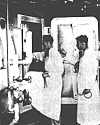
Altitude chamber 1939
In 1935, the U.S. Physiological Research Unit laboratory was established at Wright Field, Ohio, under the leadership of Capt. Harry G. Armstrong, M.C. (Medical Corps). Pioneering aeromedical research work was conducted here on health and safety aspects while in flight. On 1 Jan 1937, it became the U.S. Air Corps Physiological Research Laboratory, with improved facilities.«
50 Years of Research on Man in Flight, by Charles A Dempsey. - book suggestion.
In 1923, the first patent application on a rotary-dial telephone was submitted in France by Antoine Barnay.
In 1914, the first commercial cargo began its passage through the Panama Canal.
Path Between The Seas: The Creation of the Panama Canal, by David McCullough. - book suggestion.
In 1910, Halley's Comet was visible from Earth, moving across the face of the sun.
In 1830, English mechanic Edwin Beard Budding (c.1796 - 1846), inventor of the lawn mover, signed a manufacturing agreement with John Ferrabee, Phoenix Iron Works, Stroud. Budding based his design on the helical cutting blades he had seen on cylinders run over newly woven cloth to cut the pile for a smooth finish. His patent (No. 5,990, 31 Aug 1830) described his mower to replace hand scythes for "cropping or shearing the vegetable surface of lawns, grass plats, and pleasure grounds." It had a cast iron frame with a large roller that turned a series of cogs which rotated the blades. Production was increased in 1832 by license to the agricultural manufacturer Ransomes. Budding also invented the adjustable spanner.«
In 1787, glass was engraved for the first time in Toulouse, France.

